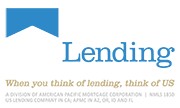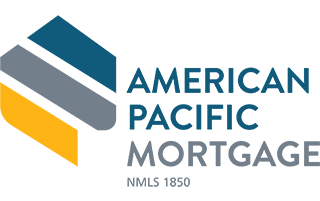How Much Down Payment is Needed for First Time Home Buyers?
Unlike other countries where living in apartments, flat or rentals, may be the norm, the American Dream is constructed around homeownership. This is no accident; everything from our tax structure to societal expectations defines achievement with buying a home. So at some point, almost everyone faces the question of how to go about saving up for a down payment to complete a purchase. What that dollar figure actually is, however, can vary dramatically and is not a set 20 percent of a home price as is the common myth. Here are the basics and tools to consider.
What is a Down Payment?
A down payment is literally a cash-up-front component of buying a home. The requirement is intentional, especially if a home purchase is to be financed with a mortgage. Lenders want to be a sure a borrower will stick around and complete the loan, not just use their money when things are good and run away when things go bad. By having personal money invested in the home, the lender then feels the buyer is more compelled to follow through.
The down payment needs to be ready, liquid cash; the buyer can’t use a credit card, for example, to make up the difference. However, it is possible for the cash to come from other loan vehicles, which will be discussed further. The money can also come from a gift to a limited extent.
How to Calculate the Different Down Payments Amounts
In the majority of real estate markets the minimum for a viable down payment from a consumer tends to be five percent of the house total cost. However, that figure is not a rule and real estate markets across the country can vary widely. So what one was used to seeing in New York may not exist in California and vice versa.
Where a down payment is generally less than 20 percent, a lender involved will require mortgage insurance be purchased by the buyer. A small down payment is still considered a high risk versus owning a fifth of a home’s total value. To make up for this risk, the lender requires the borrower to essentially take out an insurance policy that if the loan fails, the lender is protected for the larger mortgage financed. When buyers’ equity in a home reaches 20 percent, this requirement can usually be eliminated. So, bottom line, a smaller down payment creates more costs with PMI, and a bigger down payment avoids them.
How Much Should You Save Before Contacting a Bank?
There is no firm requirement that a buyer must put 20 percent down payment on the table; this is an ideal situation only. However, buyers shouldn’t think 5 percent is enough either. The market value of a home can change over time, and what was a five percent target two years earlier could have doubled by the time the money is saved sufficiently. There are also added costs that need to be paid up front when purchasing a home. So a buyer is really smarter to aim for 10 percent cash versus just the minimum. That will likely provide sufficient funds for the down payment and cash to cover closing costs as well.
Evaluating Low Down Payments Loans
Other options for those having a hard time pulling together sufficient savings include low down-payment programs. The Federal Housing Authority is the big player here, better known as Housing & Urban Development or HUD. These home loans only require a 3.5 percent down payment, a much lower amount than five or higher. There is still an insurance premium cost to protect the program, but the total outlay is considerably lower than the suggested 10 percent figure above. The restriction comes from the fact that FHA loans are restricted to only homes below an FHA value ceiling, and hot markets like California may have very little inventory in some neighborhoods consumers want to be in.
Evaluating No Down Payment Loans
In some cases it may not be feasible in a reasonable amount of time for a buyer to reach the savings needed. In these cases consumers should really be looking to see if no-down-payment programs can help. For veterans there is the Veterans Administration home loan and for everyone there is the U.S. Department of Agriculture rural home loan. Both programs incorporate a 0 percent down payment for qualified buyers. Further, the mortgage insurance cost can be avoided as well. There are program fees, but these can be amortized within the home loan itself. If a buyer qualifies, these two programs can be one of the lowest cost, least amount of cash-out-of-pocket ways to get into a home. And given that many have armed services experience, as well as the fact that 90 percent of properties in the U.S. sit in rural areas, there is a lot of opportunity here.
Is it Worth Saving the 20%?
There are two big advantages to a 20 percent down payment: more equity control of the home, and avoiding the mortgage insurance cost (or PMI). The most obvious is that by eliminating the PMI the buyer reduces his out of pocket cost monthly. PMI can cost hundreds of dollars a month that do nothing for adding equity to the consumer’s ownership status. So it’s really throwing away money to a financial insurance provider. However if it’s not avoidable, then the PMI may very well be the best way to get into a home.
Some people play the strategy of hoping the market goes up. This assumes paying the PMI for a while and then, when the market pushes the home value far up from what it was originally bought for, the buyer refinances and eliminates the PMI because his equity stake has also risen then, proportional to his original investment. This is possible because the original down payment equity value went up, but the original mortgage amount did not. So in effect the earlier small down payment gets big enough to meet the threshold of no PMI versus the outstanding loan.
The second interest is that by having a larger equity stake in the home, the buyer can then use it to make improvements down the line or pull out cash for other needs, letting the home be a personal bank in a sense. This benefit has been diluted, however, by fast-rising valuations making even small down payments worth a lot in a few years.
If a person, however, used a no-down payment loan option, then if the market rises the homeowner isn’t getting much benefit in value except for the actual equity produced in subsequent loan payments. So a VA or FHA loan person sees the advantage up front of lower requirements to get in, but they also see lower benefit and longer period before any equity power is created down the line.
What Other Up-Front Costs are Associated with Buying a Home?
The down payment is not the only expense a buyer will have getting into a new home. Closing costs, a common name catchall for all the other expenses associated with transferring a home title between parties, can add up to thousands of dollars of up-front costs. These cover everything from inspector fees to appraisal services to title search protection services, loan origination fees, and even pre-paying down mortgage interests, known as paying points.
There are also prepaid liability costs such as homeowner association fees and homeowner’s insurance costs, both a lender will want taken care of at purchase to make sure they don’t become a problem as collateral for the mortgage. In summary, saving up for a down payment really means saving up for the cash deposit as well as all the purchase fees on top.
If a person has never bought a home before, the closing costs can seem outrageous. This is a norm, however, for buying a home, and California has higher expenses than compared to the same in other states. The typical cost outlay for closing expenses tends to range anywhere from $4,000 to $10,000, depending on the home value, all the services involved, and the number of inspections involved. Assuming that a buyer is aiming for 5 percent for a down payment, a$300,000 home should then require a savings of at least $24,000 to $30,000 (8 to 10 percent of total value), either through buying programs, cash or both.
What’s the Right Down Payment Amount for You?
The key disadvantage of a first-time buyer in the California home process involves not knowing enough about how complicated home buying can be and what are the options available. This is where a mortgage banker can be tremendous help because they bring expertise to the table the first-time buyer doesn’t have.
Looking at all the variables possible, the mortgage banker will fashion a set of choices that take advantage of every viable scenario for home buying instead of just one traditional path. That gives a buyer a lot more information and, more importantly, choices on how to proceed. No one wants to be the person always complaining about missed opportunities after it is too late. The mortgage banker route can really pin down what is the right down payment solution for your budget, how best to leverage your savings, and what are the most viable choices for your situation. That’s the real knowledge that helps people get ahead in the California real estate market.
The views, articles, postings, and other information listed on this website are personal and do not necessarily represent the opinion or the position of American Pacific Mortgage Corporation or US Lending Company.
* For loan examples and more information visit our disclosure page at https://www.uslendingcompany.com/disclosures/





